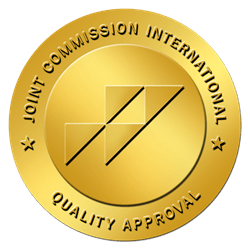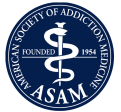Drug-seeking behavior is behavior that is meant to decrease discomfort or pain. People seek dopaminergic-drugs in order to feel better because dopaminergic-drugs increase dopamine in our mind’s/brain’s pleasure center.
The more frequently one seeks dopaminergic-drug(s), the more readily they are unable to use infrequently. Addiction is defined by the loss of choice to stop using.
Not like Mark Twain who said: Not smoking is the easiest thing I’ve ever done, I’ve done it thousands of times.
Instead, addiction is defined as the absolute inability to stop using all mood altering substances for a sustained period of quality time without the assistance of a power greater than yourself.
The addiction cycle consists of:
- dopamine-depletion associated with emotional or physical discomfort or pain (dopaminergic-drug withdrawal)
- memory of a dopaminergic-drug having provided relief
- dopaminergic-drug-seeking behavior
- dopaminergic-drug use
- relief of discomfort or pain
- gradual reduction of discomfort or pain with gradual increase of discomfort or pain
Dopaminergic-“Drugs” of Childhood
- Zoological Melanoidin Coated (ZMC) food – browned meats such as burgers & ribs
- Botanical Melanoidin Coated (BMC) food – browned plants such as fries & bread
- Heavily salted ZMC and BMC such as meatloaf & chips
- Heavily sweetened ZMC and BMC such as cheesecake & donuts
Drug-Seeking Has Its Origins during Childhood
There are 3 fundamental childrearing styles use to help manage pediatric emotional discomfort and emotional pain.
Three fundamental childrearing styles used to help quiet childhood emotional discomfort and emotional pain are:
- The dopaminergic practice of face-to-face compassionate, empathetic and soothing communication
- The dopaminergic practice of face-to-face ingestion of favorite foods
- A combination of the 1 & 2
- The dopamine-depleting & free-radical or systemic oxidative stress (SOS) enhancing process of face-to-face name-calling, insults, humiliation, embarrassment and abrasiveness
- The dopamine-depleting & free-radical or SOS enhancing process of sending the child to bed without dinner
- A combination of 1 & 2
- Threaten her son
- Raise her voice
- Tell her son he was embarrassing her
- Tell her son she is upsetting the other passengers
- Tell him to stop crying
- Tell him to stop yelling
- Tell him to be quiet
- Stick a lollypop in his mouth
- Did not deprive him of McDonald’s permanently
- dopamine-depletion associated with the notion that drug addiction was inflicted upon us by an ignorant caregiver(s), dopaminergic-drug withdrawal
- memory of a dopaminergic-drug having provided relief from having been “victimized”
- dopaminergic-drug-seeking behavior
- dopaminergic-drug use
- relief of the discomfort or pain associated with the delusion that we were turned into addicts by this nasty person or that
- gradual reduction of discomfort or pain, with gradual increase of discomfort or pain associated with playing the victim
- Caffeine
- Vaping
- Other inhalants
- Tobacco chew
- Cigarettes
- Alcohol
- CBD edibles
- Marijuana edibles
- Marijuana
- Sedatives
- Stimulants
- Hallucinogens
- Dopamine-depletion associated with emotional or physical discomfort or pain, withdrawal
- memory of a dopaminergic-drug having provided relief
- dopaminergic-drug-seeking behavior
- dopaminergic-drug use
- relief of discomfort or pain
- gradual reduction of discomfort or pain with gradual increase of discomfort or pain
Three fundamental childrearing styles that often aggravate childhood emotional discomfort and emotional pain are:
Case Example of a Child that Learned What Is Taught In Rehab
A young mother has her young son harnessed in his stroller with the brakes on. The stroller is situated in the mobility devices section of a bus. Mom is holding on to the stroller with her left hand and viewing her phone with her right, while her son quietly faces his mom and looks around at the various passengers on the bus.
After about 20 minutes and numerous stops, mother and child remain sitting quietly. Then, the bus makes a stop. Her son immediately starts trying to unlock his stroller harness. His mother calmly and lovingly instructed him not to take off his seat belt or there would be consequences.
The little boy stopped trying to get out of the stroller for a few seconds and then started again. His mother lovingly reissued her mandate and he stopped trying to get out of the stroller.
However, it promptly became apparent to his mother and other bus passengers what had transformed the bored little gentleman into a screaming drug-seeking junkie, the Golden Arches of McDonald’s.
Like a seasoned recovery counselor, mom turned up the love and compassion and understood her normally well behaved son reacted to his profound boredom, one of the top triggers for dopaminergic-drug use. After all, nothing turns profound boredom instantly into sheer joy like dopaminergic-drugs.
The Golden Arches absolutely promised the little boy that his boredom characterized by dopamine-depletion and increased SOS, would be instantly replaced with ecstatically salted and sweetened ZMC and BMC, plus a dopaminergic-toy and -drink.
That is why the little boy couldn’t stop boisterously pleading to get off the bus and out of his stroller.
Like a good recovery counselor, mom talked him down from his dopaminergic-drug thoughts or cravings and dopaminergic-drug-seeking behaviors. The passengers viewed the duo’s progress by witnessing a descending amount of loudness and conviction in the boy’s voice.
However, the boy quietly and softly reasoned with mom that he still wanted to eat at McDonald’s now.
It was then that the child’s mom informed her son, and the passengers, that today is not the day we go to McDonald’s for dinner; we go to McDonald’s on Friday.
Mother, and child resumed their pre-drug-seeking/pre-drug-seeking-intervention mild mannered and civil behaviors.
This Mom Did Not:
This mother and son worked very well together in reducing the boy’s risk of developing drug addiction in the future and necessitating residential or intensive outpatient treatment (IOP) in the future.
This mother and son drug-seeking recovery effort is reminiscent of what goes on in quality residential and IOP treatment centers.
Although it has been said that we can spend time with our children, or we can spend time with them in rehab, the aforementioned little boy made a choice to listen to his mom.
Self-Pity Turns into Discomfort or Pain
Blaming others for our own shortcomings is one of the top issues needed to be addressed during early recovery.
Why? Blaming this one or that one for our own alcohol or drug dependence gives us the “poor me’s … poor me … poor me … pour me a drink.”
Because feeling sorry for one’s self causes:
Remember, drug addiction is not inflicted upon people. The drug-addiction lifestyle is a matter of choice that morphs into loss of choice to stop.
Dopaminergic-Drugs in Teens
Dopaminergic-Drugs in Adults
Regardless of drug of choice, each drug-seeking behavior is the action part of the following drug-addiction cycle:
It’s easy to get one’s self trapped within the drug addiction trap.
Seeking help is not a sign of weakness.
Seeking help takes courage and a team of addiction escape experts.
Reach Out
If you or someone you know is struggling with substance abuse problem, please reach out to our addiction specialists for guidance and support, at (877)-RECOVERY or (888) 716-4070. Our addiction specialists make themselves available to take your call 24 hours a day, 7 days a week. Because We Care.















